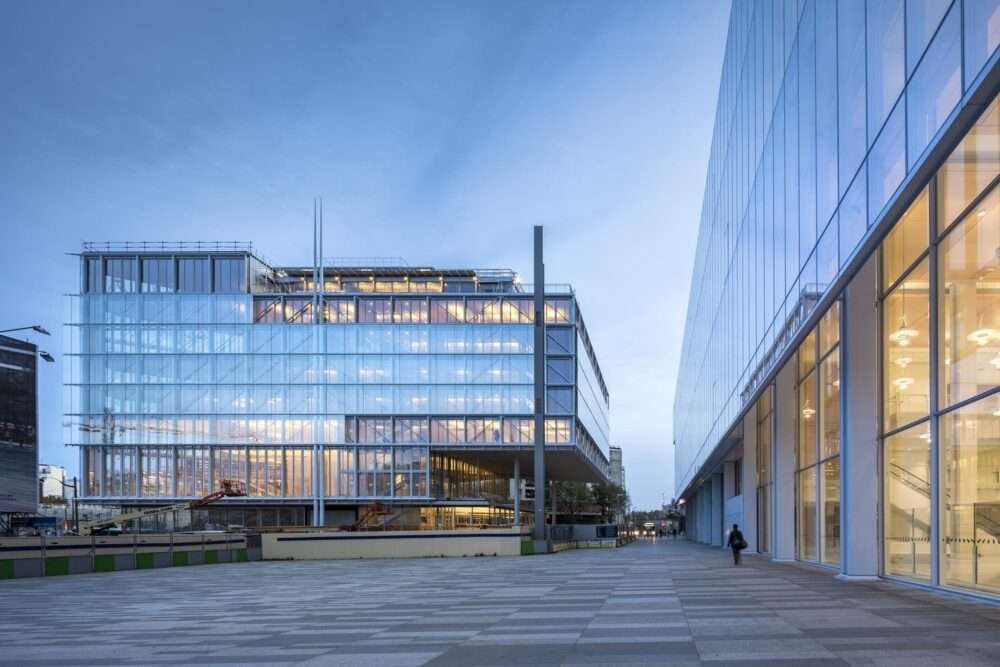Transparent buildings and the illusion of democracy,
Somewhere between 1914 and 1915, Le Corbusier designed the Maison Dom-Ino,
It is a pioneering modular structure that replaced heavy load-bearing walls with reinforced concrete columns and slabs.
The open floor plan with minimal slender elements, coupled with large glass facades,
It will ensure healthy natural daylight for the interior spaces as well as the desirable architectural transparency
that can blur the boundaries between indoors and outdoors – at least figuratively.
And more than a century after Le Corbusier shared his thoughts on Dom Inoue, contemporary architecture continues.
Following a lingering modern era, in investing in the use of glass as a solution for walls and facades.

Of course, the meaning of these articles has changed quite a bit over time.
Transparency was originally used to reveal structure, making it more understandable,
but it has become increasingly associated with ideological values.
It has been used in government buildings because it evokes an idealistic openness that transcends the material world and embraces symbolism.
In his book The Architectural Complex, critic and historian Hal Foster comments on an example:
Renovation of the German Parliament in Berlin Reichstag, done by Foster + Partners.
Where this project, in addition to many other projects from the same office, and many other companies,
To contrast architectural and political openness, with glass reflecting transparency and accessibility to democracy.

Purdue Law Courts
Another project that explores this analogy is the Purdue Law Courts designed by Rogers Stirk Harbor & Partners.
Richard Rogers, Norman Foster’s friend and former business partner,
shares the same views as the designer of the Reichstag,
And it is that the physical transparency of the glass can reflect the transparency of the democratic state –
At least this was one of the ideals he tried to convey to European governments,
At a time of loneliness before the 2008 crisis.

The art historian argues that such projects seek to embody the democratic values of openness and participation.
This analogy, however, is both naive and dubious.
Forcing a approximation of material, democratic, and symbolic values can be dangerous and, in some cases, absurd.

An example of this is the Singapore Supreme Court project, also designed by Foster + Partners – given that government’s history,
The close connection between the materiality of glass and the symbolic values of openness and transparency is meaningless.
It seems to be more associated with the image of great architecture than with an institution created to meet the needs of the people.

This association of physical property with symbolic value is being explored in other projects by the same office,
such as New City Hall in Buenos Aires,
It is a glass box encased in an undulating concrete surface where “activity spaces are open, naturally lit and visible,
This ensures good communication between departments and enhances the sense of belonging to the community.”

Likewise, the headquarters of the Ministry of Foreign Affairs of the Paris Bar by Renzo Piano Building Workshop,
Run by another associate of Richard Rogers.
With its curious triangular plan and almost all covered in glass, the Ministry of Foreign Affairs has a “symbolic transparency, the life of the building,
activity, and its entry and exit will be clearly visible through its interface.”
For more architectural news







